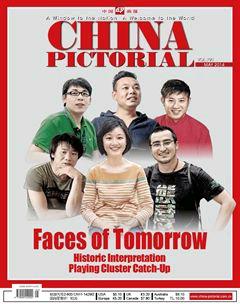Movies vs. Cinema
by+Hai+Xuan
In general, auctions for artistic films in the Chinese market occur in spring between March and April, when moviegoers are fatigued from the peak period of Chinas biggest holiday, Spring Festival, which usually falls in February. Spring marks the off-season for both Chinese and imported big-budget movies, leaving space for small, lower budgeted films. Several indie films stood out on the 2014 auction block. On March 21, Black Coal, Thin Ice, which won the Best Film and Best Actor at Berlinale, began its run in China. By April 2, its box office was close to 90 million yuan, a new record for Chinese-made art house films.
Blurred Lines?
In China, 2014 has brought an art house film boom. In the months after Black Coal, Thin Ice hit screens, several famous Chinese directors released new, artistic work, including Zhang Yimous Home Coming, Chen Kaiges Taoist Mountain, Ann Huis The Golden Era, and The Lady from Tang from Hou Hsiao-hsien.
Art house film starkly contrasts mainstream cinema. Such films tend to place more focus on art and the expression of feelings than narrative. For a long time, art and commerce seemed irreconcilable: Profitable films are meaningless, while meaningful work doesnt make money.
Nevertheless, the artistic tide is turning thanks to the involvement of heavyhitting directors, playwrights, and actors. Art house films were already making box office breakthroughs when films such as Buddha Mountain hit theaters in 2011 as well as A Simple Life, Late Autumn, and Love in a Buff in 2012. However, Black Coal, Thin Ice has become a game changer since its release.
Movies such as Home Coming, Taoist Mountain, and The Golden Era, all feature major stars from commercial films, but aim for deeper feelings concerning topics such as life and humanity.
Several major commercial films to score at the box office in 2013, such as So Young, American Dreams in China, and Finding Mr. Right also include artistic elements, attempting to touch spectators with profound ideas.
Clearly, ambitious Chinese filmmakers have begun stepping into a gray area between art and commerce in hopes of winning over both the box office and critics, while accelerating the diversification of the Chinese movie industry.
Maturing Audiences
The year 2013 brought a string of surprises to Chinese moviegoers. The annual box office topped 20 billion yuan, 59 percent of which was earned by Chinesemade movies, making China one of the few countries in the world to rival Hollywood in its domestic market. In 2013, 33 Chinese films grossed at least 100 million yuan each at box office. Movies tending towards more artistic themes and smaller budgets also rose sharply. Of the top ten Chinese movies at the box office, half have notable artistic elements.
Scholars believe that China is teetering at a favorable turning point for its movie production. Chinese film is shifting from extensive growth with focus on quantity to intensive growth with focus on quality. At the same time, Chinese audiences are changing their methods and preferences for watching movies, becoming more refined. The market is demanding more products with artistic value over those simply providing social contact.
The extraordinary achievements of art house movies in 2013 evidence the Chinese publics greater desire for artistic expressive force and spiritual themes after enduring a decade of “bombing” by commercial film.
In modern China, younger adults – the major demographic target for filmmakers – appraise a films artistry and ideology independently. They no longer judge films based on impressive special effects and all-star casts. Chinas restructuring movie industry will produce more films with humanistic connotations, creating a more diversified movie market, thus enhancing its healthy development.
Cinematic Spring
Despite the rise of art house films in 2014, Chinas cinematic art turning point is still yet to come.
In April 2014, no art house films other than Black Coal, Thin Ice did much at the box office. Moreover, few art house theaters exist in China – a sharp contrast with Europe, where the government provides support and preferential policies for such cinemas and films. Germany has more than 150 art house theaters. Many of the best movie theaters in the world are found in France, in terms of both projection and distribution of artistic film.
The situation is different in China. Few theaters specialize in screening art films, which are relegated to mainstream theaters to compete alongside commercial films aimed squarely at the box office. After all, artistic masterpieces by directors like Zhang Yimou and Chen Kaige are few. Most art movies are made by young cutting-edge directors, who have zero advantages in distributing and promoting their products.
Light has been found at the end of the tunnel, however. In 2013, 14 theaters joined the Shanghai Art Film Alliance – an organization founded to support artistic film in Shanghai. Not long ago, media reported that China Film Group Corporation, a leader in Chinese film production, conducted investigation and research about establishing art house theaters. Moreover, many movie theaters are adding projectors specifically intended for art films. In 2012, theaters under Dalian Wanda Group devoted special screens to Seediq Bale, regardless of attendance.
After Black Coal, Thin Ice blazed new trails for Chinese art house film, the outlook for future films is expected to be brighter.

